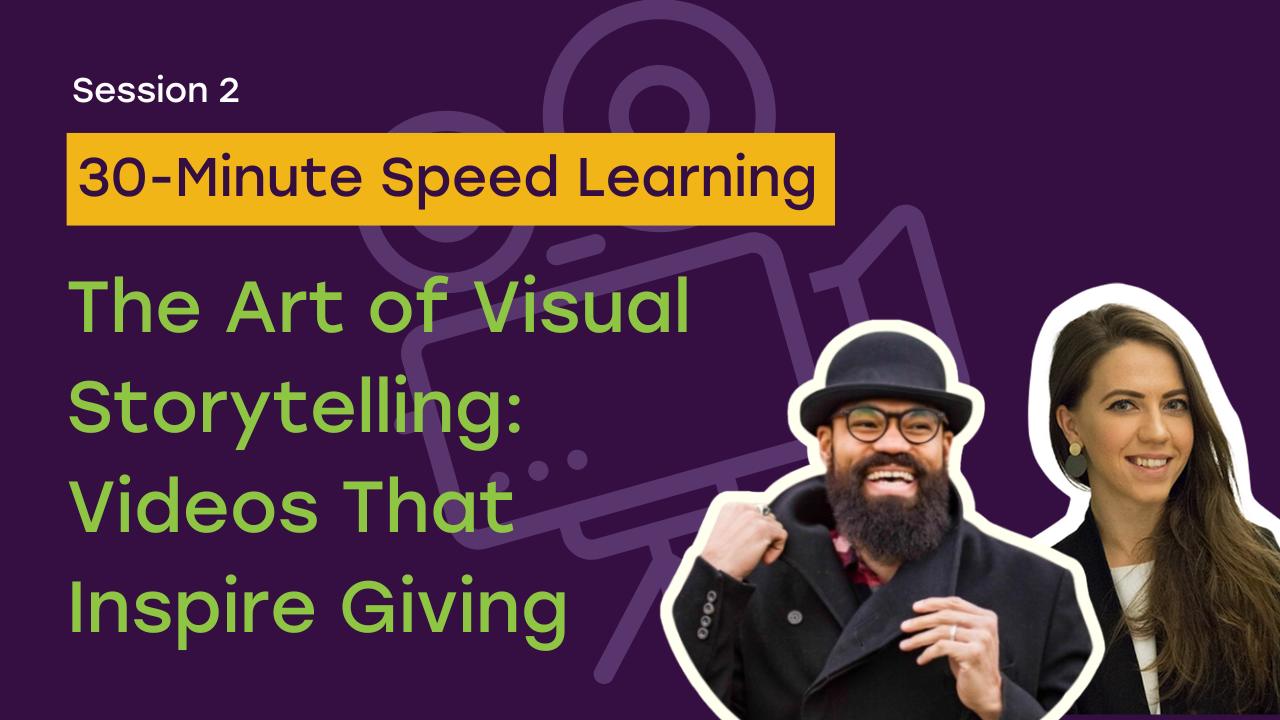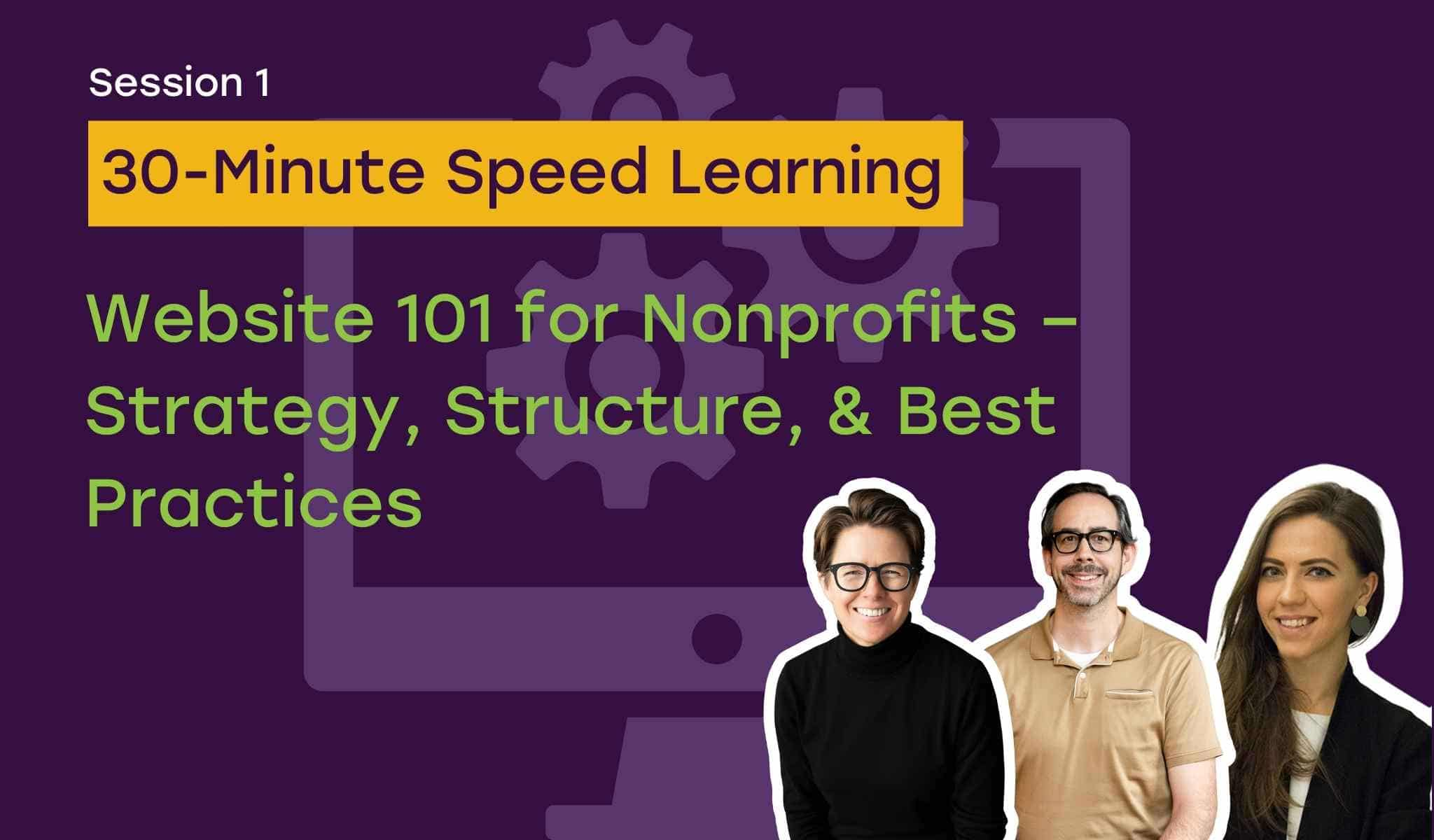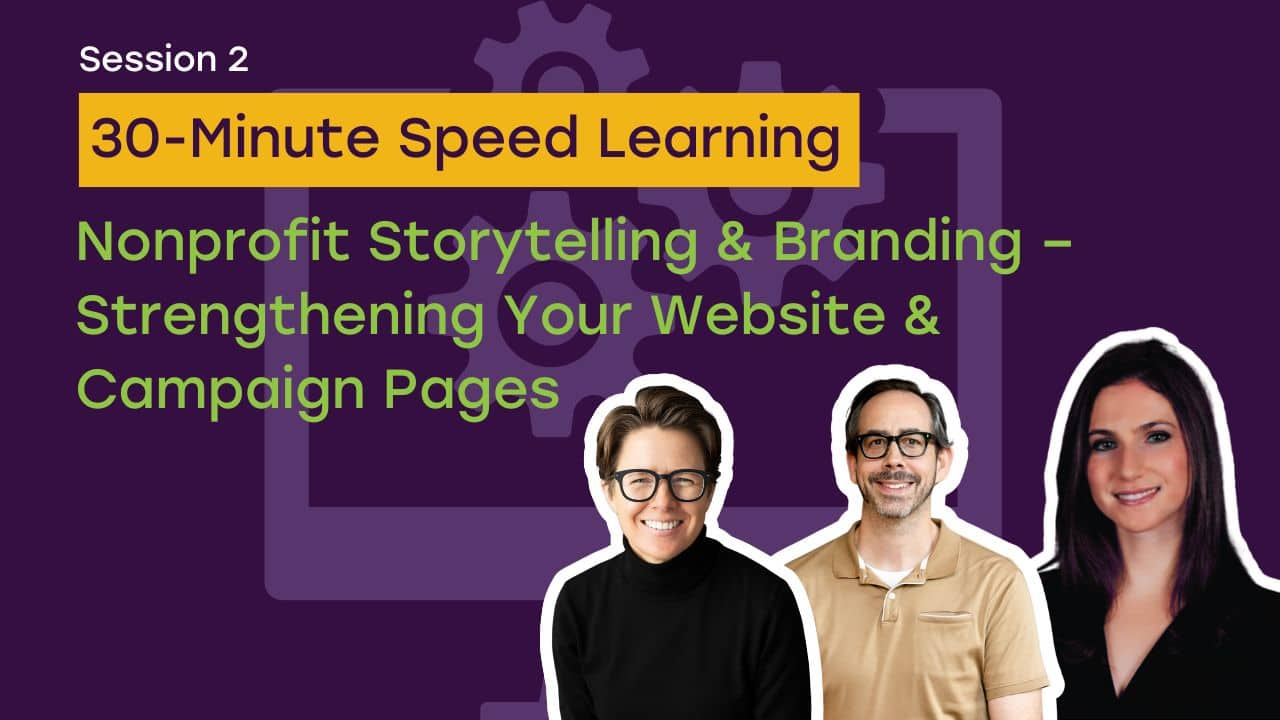Navigating the world of marketing and communications can be a daunting task for animal welfare organizations. In the always-busy, never-enough-time nature of animal welfare work, finding the time to develop effective marketing materials often feels like an impossible feat. Because of this, ensuring that messages resonate loud and clear with the right audience is of utmost importance for animal welfare organizations. Recognizing this challenge, we’ve partnered with HeARTs Speak for this exclusive webinar, “Audience-Centric Marketing Strategies for Animal Welfare Organizations.”
In this dynamic one-hour webinar, Giveffect’s Director of Training and Partnerships, Sara Gage, and HeARTs Speak’s board member, Caitlin Quinn, discuss what an audience-centric approach to marketing means, how to achieve audience-centric marketing, and offer real-life examples of implementing these strategies into your organization’s practice.
In this webinar, you’ll learn:
- Understanding the importance of audience-focused communications for animal welfare organizations
- Segmenting your audience to enhance marketing effectiveness
- Creating meaningful community interactions and tracking your efforts
- Practical steps and tools to execute your marketing strategy
- Q&A
No matter where your organization is at with its marketing efforts, this webinar is your guide. We’ve also put together some key highlights for you to reflect on below.
Common Animal Welfare Organization Challenges
Often, animal welfare work is misunderstood. To those not directly involved, it may seem very binary – either the idyllic notion of playing with puppies all day or the heart-wrenching scenes often portrayed in mainstream media. However, those who are involved understand the reality falls somewhere in between. Consequently, building public awareness and community trust can be challenging. Given the passionate and intense nature of this work, maintaining sustained engagement from donors and supporters beyond initial events or interactions presents its own set of obstacles. Additionally, with so many different tools available to animal welfare organizations and limited time, it is easy not to know where to start, and gaps in data and information management can arise.
To overcome these challenges, innovative solutions and collaborative efforts are essential. This webinar zeroes in on a crucial component: adopting an audience-centric marketing approach. The more that organizations can target who they are speaking to and facilitate their messages to reach the right people, the more that they will see the impact of their programs and services.
Why The Audience Matters to Animal Welfare Organizations
Understanding your audience is crucial in marketing an animal welfare organization. It allows for tailored communication that resonates with people’s values and motivations, thereby effectively garnering support and engagement for animal welfare causes. A common pitfall is that as individuals often become experts, they may inadvertently use language and terminology that is unfamiliar to the average person but is second nature to them. This language gap may lead to audience disconnection and reduced response to calls to action. To address this, organizations must prioritize understanding their audiences and keeping their wants, needs, and interests at the forefront. This approach fosters trust and collaboration within communities.
Audience Segmentation
Audience segmentation is the process of dividing a larger target audience into smaller, distinct groups or ‘segments’ based on shared characteristics, behaviors, demographics, or preferences. For example, think about the way that you speak to your coworkers, parents, and friends. Chances are you communicate with these groups of people a bit differently. Think about audience segmentation for your animal welfare organization in this way. This includes the jargon or short-hand you might use, the tone of voice, and topics you might discuss. When you segment your audience, you can tailor messages and campaigns to each segment’s specific needs and interests. This approach strengthens connections, builds trust, and encourages the desired actions from your audience.
Unlocking The Potential of Audience Segmentation for Animal Welfare Organizations
We recognize that there is no “one-size-fits-all” approach that will work for everyone when using audience segmentation. It is important to tailor this approach to your organization’s unique set of resources and data available. When taking your first steps at this approach, think about your most common constituent ‘types’ so that you can begin to tailor your messages to them. For example, Adopters, Board Members, Donors, Volunteers, etc.
Centralizing Data For Audience Segmentation
Centralizing your data is crucial for effective audience segmentation. And with the evolution of technology, different animal welfare organizations leverage different means to centralize their data. Some animal welfare organizations use paper, pens and post-it notes. While others utilize spreadsheets such as Excel or Google Sheets. There are also many animal welfare organizations that rely on a tech stack of 4 – 6 disparate software tools to manage their shelters, volunteers, donors, emails, and marketing. However, with multiple disconnected systems, data silos emerge, complicating audience segmentation. Alternatively, all-in-one solutions like Giveffect are designed to address these challenges by centralizing data, providing a comprehensive view of constituents, and supporting audience segmentation strategies in one powerful platform.
Centralizing Data Practical Examples
A good place to start with your current data is to begin grouping your stakeholders by type. For example, group your adopters, volunteers, fosters, and donors into separate lists or ‘segments.’ The above image is an example of how a Humane Society Client has segmented their constituents into “Groups” with a view of Giveffect’s Contacts Group tab. When an individual completes the application to foster a pet, rules can be set up so that the software automatically adds them to the “Foster” group in the CRM/database. And their foster application details and responses are added to their record as well.
To enhance engagement, consider further segmenting your animal welfare organization’s groups based on specific event participation or past interactions, such as adoption events, annual fundraisers, and galas. By doing so, your organization can send targeted communications, information, and invitations to individuals who have demonstrated interest through their previous engagements. This personalized approach fosters a sense of recognition and value among participants, resulting in increased engagement and satisfaction. These are just two examples of what centralizing data looks like in Giveffect, specifically when looking at the CRM’s ‘contacts’ module.
Tracking Interactions
A helpful exercise for building out your audience group types/segments is to think about what programs and activities are creating interactions with your supporters. For example, are you primarily an adoption agency, and is there a way to break down adoptions into dogs, cats, or small creatures? Take a moment to jot down your top three to four main audience types. Once you have these down, think about how you are engaging with these groups. Are you mostly collecting forms, sending out email blasts, or posting on social media? This exercise will help you identify what data you are receiving and how you are storing it. The goal here is to get comfortable with your data.
Audience Segmentation Case Study Example: Paws, Claws & Corks
In the next few slides, Sara Gage walks through one of Giveffect’s animal welfare organization client’s use of audience segmentation in their annual Paws, Claws, & Corks event invitation series. This event is an in-person fundraiser with an online silent auction component. In the first part of this invitation series, the client used Giveffect to create specific groups of years past Paws Claws & Corks attendees, volunteers, and donors. This initial invitation to these groups included personalized messaging encouraging their participation in the event once again. In the next part of this annual event invitation series, this client sent out a larger email blast to the general public. Now, all those who are unable to attend in person can still participate in their virtual silent auction or simply donate to their campaign.
Rest assured, Giveffect has a built-in feature that automatically ensures individuals who belong to multiple groups included in the same email campaign will only receive the email once in their inbox. By leveraging both the targeted groups and a larger audience, for the first time in over five years, the client raised over their $200,000 fundraising goal.
Key Takeaways for Animal Welfare Organizations:
- Audience-Centric Marketing establishes trust, builds effective connections, and ensures your content reaches individuals who will support your animal welfare organization.
- Audience Segmentation is a key strategy that targets specific community member types and increases message effectiveness.
- Targeted Communications using segmented groups maximize impact.
- Leverage the right technology to centralize your data, build constituent profiles and groups, and personalize communication all in one platform.
Conclusion
The journey of reaching and engaging your audience in animal welfare marketing is undeniably challenging. However, deploying strategic approaches and leveraging innovative technology solutions can help you navigate this challenge. Understanding the importance of tailoring messages to resonate with diverse audiences fosters trust, breaks down communication barriers, and cultivates meaningful connections within our communities. Through audience segmentation and the centralization of data, animal welfare organizations can unlock the full potential of their outreach efforts, ensuring that every interaction is personalized and impactful.
Ready to see the impact for yourself? Schedule a personalized demo today to discover how Giveffect’s comprehensive 10-in-1 solution can elevate your animal welfare organization’s marketing efforts and help you achieve your goals.


